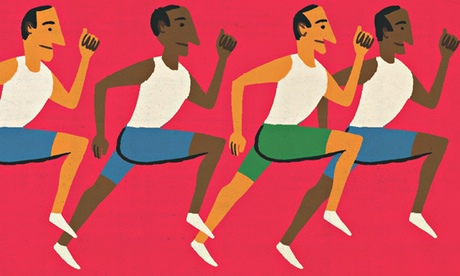
It’s safe to assume runners in the men’s 100 metres in the 2009 World Athletics Championship – in which Usain Bolt set a new world record – were hyper-competitive people. Yet a recent study, based on a frame-by-frame analysis of that race, shows something odd: despite presumably being consumed with the desire to win, Bolt couldn’t help repeatedly falling into sync with the steps of Tyson Gay. Even at this moment of such vehement rivalry, there was unintentional coordination. Did it slow Bolt down? Probably the opposite: there’s evidence that conforming to an external rhythm makes gaits imperceptibly more efficient. So, Gay may have helped Bolt win.
The finding reinforces two truths about “synchrony”, or falling into time with others. One is that it’s impossible to resist. At the theatre, applause gradually organises itself into a rhythm; walk down the street beside a friend – or a stranger – and you’ll find your paces start to match. Even the heartbeats of lovers have been shown to synchronise. (On the other hand, “menstrual synchrony” among women living together is now considered a myth.) The second truth is that synchrony is good for us, making us perform better, or feel happier and closer to others. Synchronised movement, for example, seems to be a bigger mood-boost than other kinds: it’s not simply that dance and aerobics are good exercise and a distraction from worries. This also explains the alarming efficacy of the slightly creepy rapport-building technique known as “mirroring”: it’s hard to dislike someone who’s skilled at mimicking your body language.
Could synchrony even be the glue that holds societies together? That’s the radical thesis of the historian William McNeill, in his 1997 book Keeping Together In Time. From communal dance and military drills to Mexican waves at football stadiums or group calisthenics in Japanese offices, “moving our muscles rhythmically” in unison, he argues, has helped bands of humans gel and thrive since prehistoric times. The results can be far from happy: historically, synchronised marching helped make soldiers willing to march to their deaths, and few have exploited the solidarity-building effects of group movement as expertly as Adolf Hitler. McNeill recalls his own military training, in Texas in 1941: “Marching aimlessly about on the drill field… a sense of pervasive wellbeing is what I recall; a strange sense of personal enlargement; a sort of swelling out, becoming bigger than life.”
If this sounds more like a religious mystic recalling an ecstatic experience, maybe that’s no coincidence. That synchrony feels so instinctive and so enjoyable reminds us the dividing line between the self and the rest of the world is blurry at best – McNeill’s “loss of boundary” can feel amazing. In communal movement, it’s as if you suddenly realise what a burden it is to maintain your individualism the rest of the time. Morris dancing and synchronised swimming might not be completely indefensible after all.
- Oliver Burkeman will be speaking at a Guardian Live event,
Buying Happiness, with Philippa Perry and others, on 18 May at Conway Hall, London WC1.
oliver.burkeman@theguardian.com

